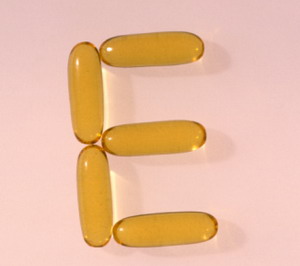Women Healthy -

Vitamin E is an antioxidant that has many benefits, either when taken alone or in combination with other vitamins. Vitamin E was first discovered by Dr. H.M Evans, in 1922. Vitamin E is a combination of eight important molecules that is four tocopherols and four tocotrienols. Vitamin E is not soluble in water but soluble in fat. In our body, Vitamin E will be digested by the bile, which serves as an emulsifying oil. Because of its anti-oxidant vitamin E it is very beneficial for health.

As an anti-oxidant, vitamin E is useful in a variety of body processes and help protect vital cell structures. Vitamin E protects cell membranes from free radical damage. As an anti-oxidant in the body, vitamin E is beneficial in searching, reacting, and break the chain reaction of free radicals. In the reaction process, vitamin E itself converted into a radical. However, this radical will soon regenerate into active vitamin through a biochemical process involving other compounds.
Vitamin E and skin health has a very close relationship of causality. Soft and healthy skin requires the fulfillment of vitamin E. Therefore, vitamin E is an important part of almost all skin care products. In public, even vitamin E is better known as vitamin nutrients to the skin. And a lot of people take advantage of vitamin E for healthy skin.
Benefits of Vitamin E
Increase endurance,
Also help cope with stress, increase fertility, minimizing the risk of cancer and coronary heart disease.
For Healthy Skin
the role of vitamin E is very important for healthy skin, by maintaining, improving skin elasticity and moisture, prevents premature aging, protecting the skin from ultraviolet radiation damage, and accelerate the wound healing process.
As antioxidants.
All vitamin E is an antioxidant and is involved in many body processes and operate as natural antioxidants that help protect the cell structure which is important especially cell membranes from damage due to free radicals.
Protect red blood cells that carries oxygen to all body tissues from damage.
In addition to protecting from the effects of excess vitamin A and vitamin A to protect from damage, this vitamin can also protect animals from the effects of various drugs, chemicals, and metals which support the formation of free radicals.
Treat acne
Topical vitamin E oil, useful to prevent and accelerate healing of acne. Vitamin E is also believed to reduce the appearance of stretch marks, acne scars and camouflage freckles, wrinkles and smooth lines due to aging.
For healthy hair
This vitamin E oil helps the blood circulation to the scalp so as to improve the health of hair. Vitamin E helps prevent the signs of premature aging such as graying hair, balding or hair loss. Some brands of shampoo and conditioner today many take advantage of vitamin E. Because, basically healthy hair is also very dependent on the health of the scalp.
Vitamin E Foods
1. Sunflower seeds
Sun dried seeds and sunflower oil are good sources of vitamin E. You can change the cooking oil you use with sunflower oil.
2. Almond
Almost all of the food kind of nuts, especially almonds contain vitamin E. You can replace your snacks with almonds.
3. Spinach
Spinach is a vegetable that is rich in health benefits. In addition to vitamin E, spinach is also a provider of other essential nutrients.
4. Broccoli
Broccoli is also a vegetable that contains vitamin E. Cook broccoli according to your tastes well made soup, steamed or eaten fresh.
5. Tomatoes
Fresh tomatoes or tomato juice as a healthy food intake of vitamin E. Tomatoes contain vitamin E with a very good amount.
6. Mustard greens
Green cabbage is a vegetable that you should eat to increase intake of vitamin E. Consumption of mustard greens with fresh circumstances, or not too long in the cooking.
7. Paprika
Vegetables that similar to chili, but not spicy it is also a source of vitamin E. peppers are also rich in vitamin C and other antioxidants.
8. Peanut butter
For fans of jam you do not have to worry about looking for the intake of vitamin E. One tablespoon of peanut butter contains about 1.25 mg of vitamin E.
9. Cereals
Eating cereals also increase the intake of vitamin E. When you look at the store or supermarket cereal make sure the container has the nutritional value of vitamin E.
10. Turnip greens
Turnip greens provide vitamin E with a pretty good amount. Turnip greens are also rich in calcium.
During its development, Vitamin E is produced in the form of pills, capsules, and others. Vitamins that already packaged in various forms is sold freely in the market and are considered useful.
Tips For Choosing Good Vitamin E
In order to gain the maximum benefits of vitamin E, we need to know what is vitamin E which is good. Here are tips for choosing good vitamin E:
1. Choose products with the vitamin E content of natural vitamin E that is labeled d-alpha tocopherol, and not be written with dl-alpha tocopherol.
2. Choose vitamin E products that do not cause allergies and irritation of the skin, that is labeled with dermatologist-tested. This means the product has been tested vitamin E and examine its feasibility by dermatologists.
3. For vitamin E products which directly applied to the skin, you should select that contains vitamin E concentrations between 0.1 to 1 mg. This is done so that antioxidants can still function properly.









